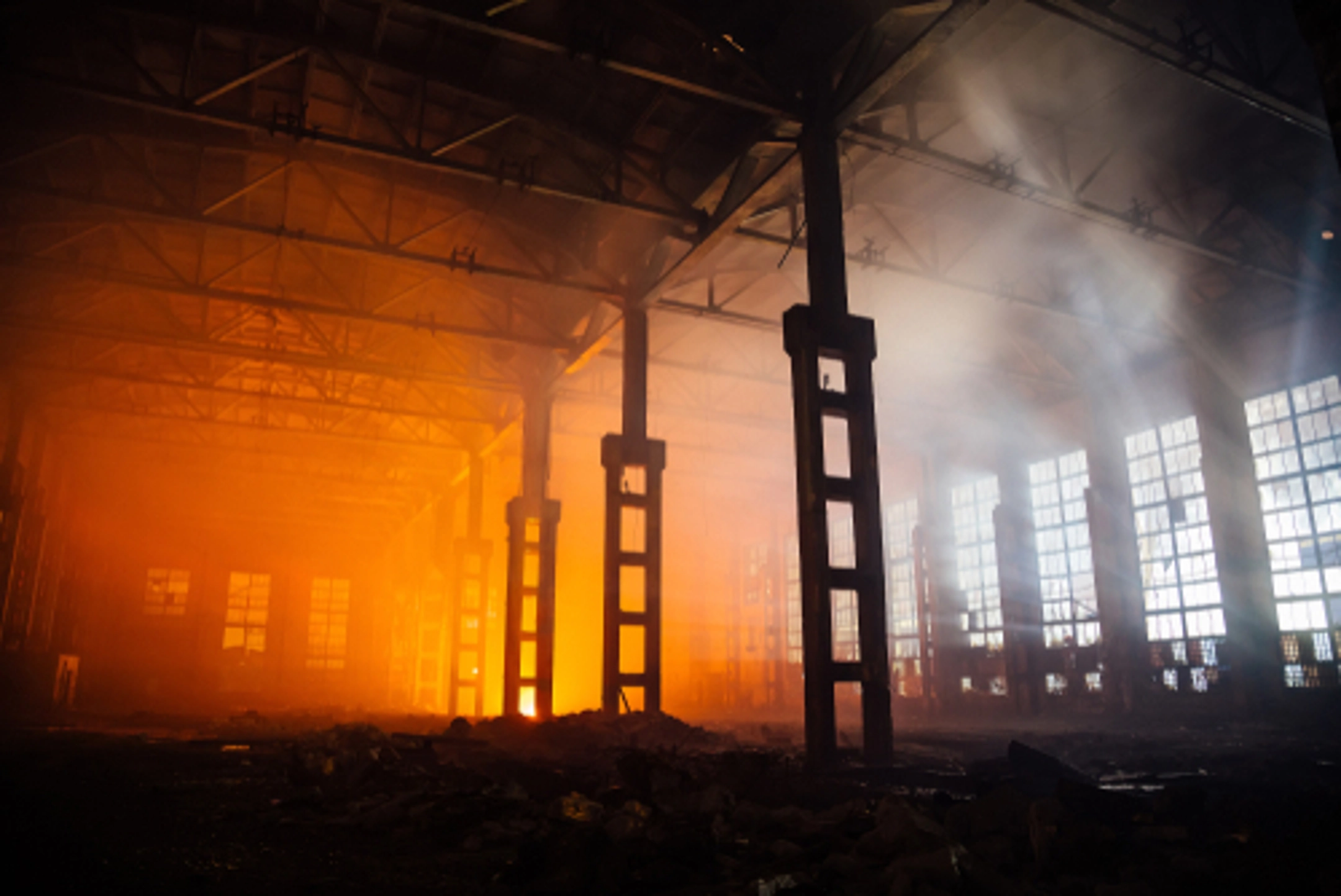
Fires in commercial properties can cause major destruction, threatening the lives of employees and customers, impeding business operations, or even halting production entirely. Whether your commercial property is a hospital, office, manufacturing facility, or more, there are steps you can take to help lessen the chance of a fire.
What is a Commercial Fire?
Brainly indicates that a commercial fire is a fire that breaks out in a store, warehouse, office, or other commercial building. It can involve complex fire suppression systems, hazardous materials, and challenges unique to commercial properties, based on the layout, size, and structure.
What is the Fire Triangle?
Whether a fire is started in a commercial property or not, the University of South Carolina indicates that three elements must be present: oxygen, heat, and fuel. (If you add a fourth element, a chemical reaction, you have a “fire tetrahedron.”)
When discussing the fire triangle, if you close your eyes and picture one, each side represents either oxygen (to maintain combustion), heat (to raise the material to its ignition temperature), or fuel (otherwise known as combustible material). If you add a chemical reaction, that goes in the middle. If any of these elements is removed, there is no fire.
What are Commons Reasons for Commercial Fires?
Frankfort, Kentucky’s government website indicates the following common reasons for fires in commercial properties:
- Missing smoke detectors
- Outdated smoke detectors
- Hallway storage restricting exits
- Excessive storage blocking rear door exits
- Faulty exit signs/emergency lighting
- Missing fire extinguishers
- Outdated fire extinguishers
- Missing light switch covers
- Missing outlet plug covers
- Dumpsters closer than 10 feet to a building
- Outdated fire protection equipment
- Exposed wires
- Exposed or missing junction box covers
- Connections to the fire department that are missing protective covers
- Water heaters and furnaces that have combustibles placed next to them
- Combustibles placed under stairs
- Excessive storage blocking 36-inch clear access to electrical panels
What are the Five Key Elements of Fire Safety Management?
FieldInsight lays out the five elements of successful fire safety management:
First, identity fire hazards. This may include assessing if heating substances like water are present (which could cause a Class A fire). It may also include assessing if chemical or combustible materials are present (which could cause a Class B fire). Additionally, you might notate any faults in electricity or equipment (Class C fire) and analyze the presence of metal work or any combustible metals (Class D fire).
Second, identity people at risk, and check that smoke detectors, fire doors, and safety ramps are present. People at risk may include employees or contractors, building visitors, security personnel, and cleaners.
Third, eliminate fire safety risks. By making yourself aware of the list outlined earlier of common commercial fires causes, you can best equip yourself to avoid them.
Fourth, document risk assessments. This involves creating a written plan (like SERVPRO’s Emergency Ready Plan) to outline fire protection management protocol. You might also wish to add evacuation plans, signage placement, and what ongoing fire prevention maintenance is necessary on the property.
Fifth, review, adapt, and share. Make sure your team and/or those working in the building are aware of your fire safety management rules and information. Be willing to adjust as necessary.
Commercial Fire Prevention Tips
Frankfort, Kentucky’s government website goes on to outline the following six major tips for fire safety in commercial properties (visit the resource for further detail).
First, assess fire extinguishers and smoke detectors. Portable fire extinguishers should be in common areas, mounted in a visible and easily accessible location. Are they inspected annually, and do they hold service tags? Smoke detectors should be replaced every 10 years, according to the U.S. Fire Administration.
Second, look over the exterior of the property. Are areas outside of exit doors clear and free of obstacles? Dumpsters should be further than 10 feet from the building (including roof overhang).
Third, look at the electrical setup. Specifically, you should check for poorly maintained, frayed, or worn power cords. Are appliances in good condition? Make sure there is a clear, accessible area in front of electrical panels. Are all circuit breakers in the panel easily identified? They should not have missing or blank covers. You should also verify that covers are on all outlets, junction boxes, and electrical switches.
Fourth, review exit doors and fire doors. Make sure that, if the power goes out, employees and other personnel can see well enough to safely exit the building. This means making sure bulbs function properly. Consider keeping flashlights on hand. Is there at least a 36-inch wide passageway (clear of obstacles) leading to all exit doors? Make sure self-closing devices on fire doors function properly and don’t need propped open, and that any damaged or faulty self-closing devices are replaced and/or repaired.
Fifth, assess alarm/suppression systems, including sprinklers, air duct systems, and/or hood systems. These systems need regularly maintained and tested yearly by licensed technicians (though hood systems should be tested and inspected twice a year).
The sixth tip covers a variety of miscellaneous recommendations, including (but not limited to) notating any openings or holes in walls or ceilings. You should also check to see if your building has private fire hydrants, along with a key security box. If you’d like one, contact your city’s fire marshal.
SERVPRO® Can Help Clean Up Commercial Fire Damage 24/7
Commercial fire damage can cause serious damage, but SERVPRO is Here to Help®. Established in 1967, SERVPRO has become the #1 choice in cleanup and restoration for a reason.
With more than 2300 SERVPRO locations in the United States and Canada, there is a SERVPRO franchise near you, ready to assist with your cleanup, restoration, and construction services 24/7. When fire strikes your commercial property, look no further than SERVPRO. Call today for emergency cleanup assistance.